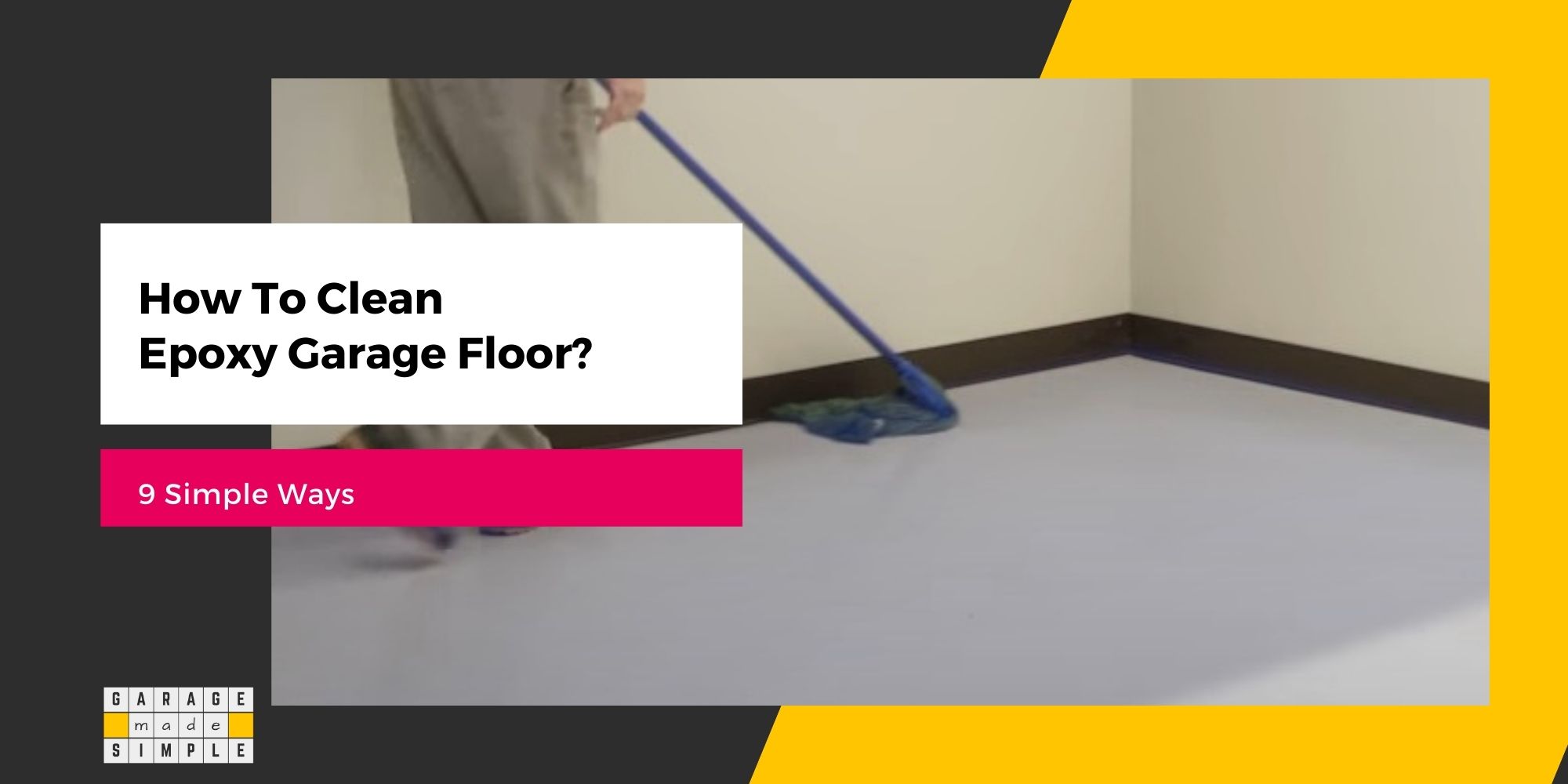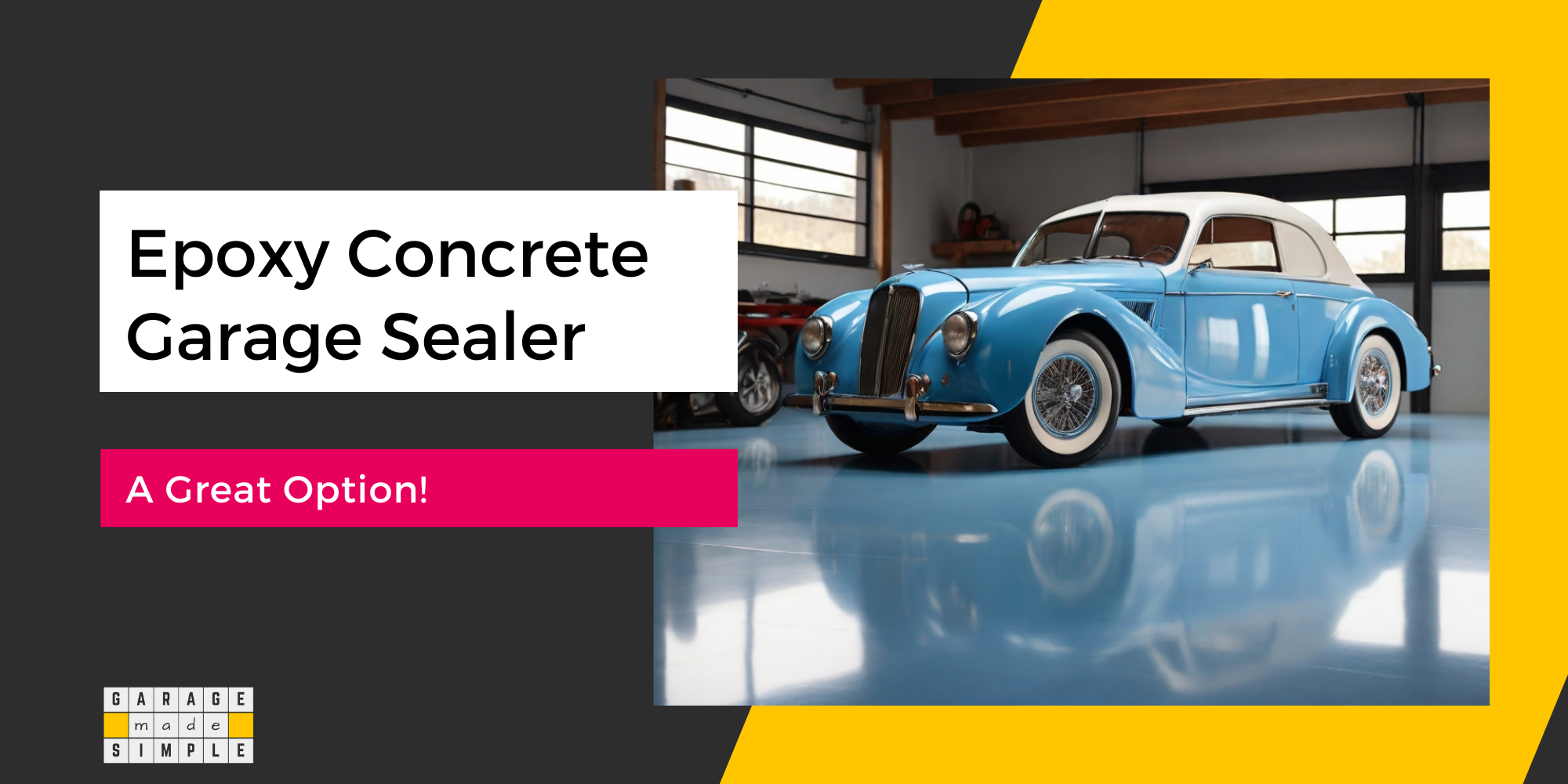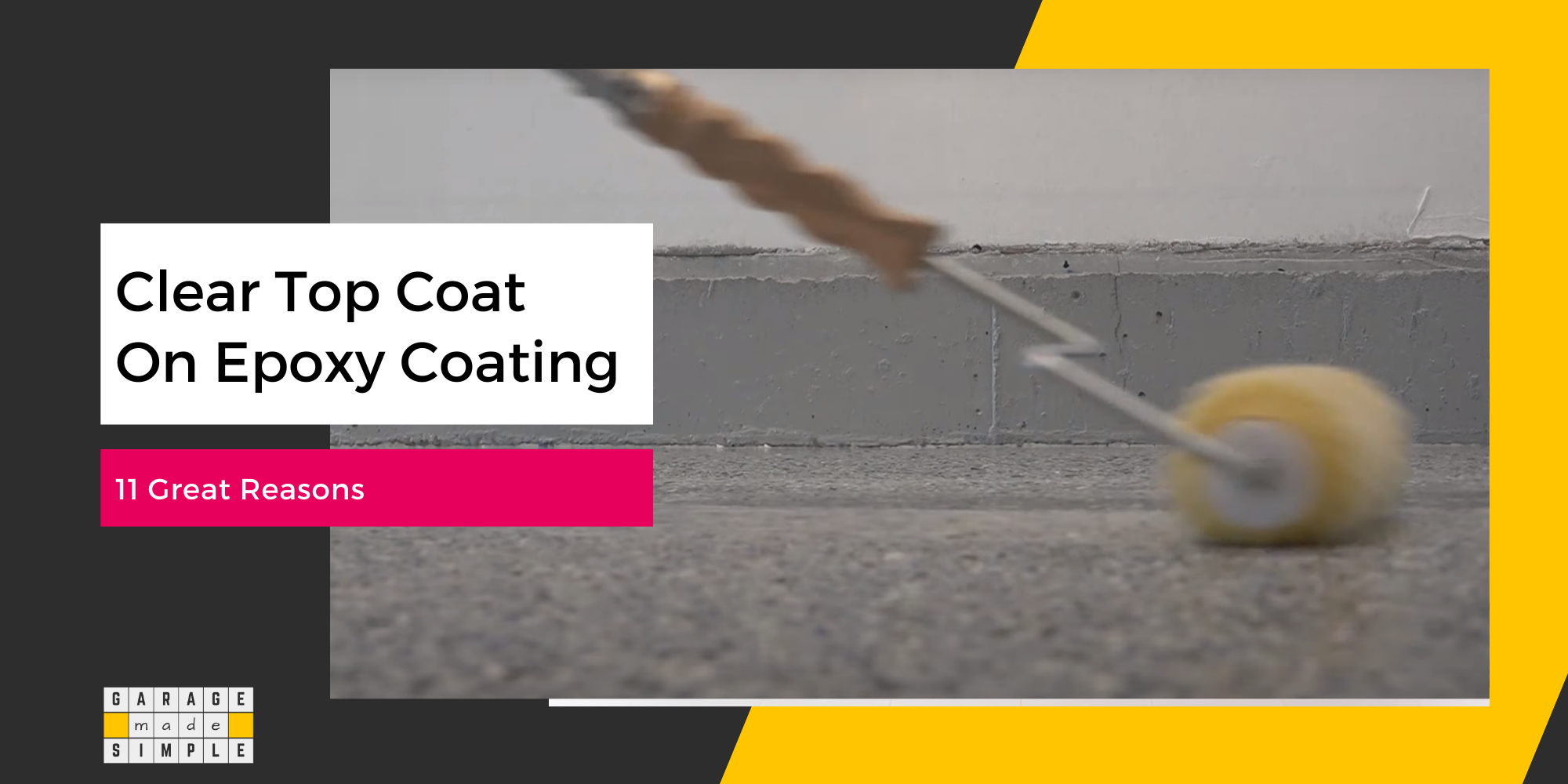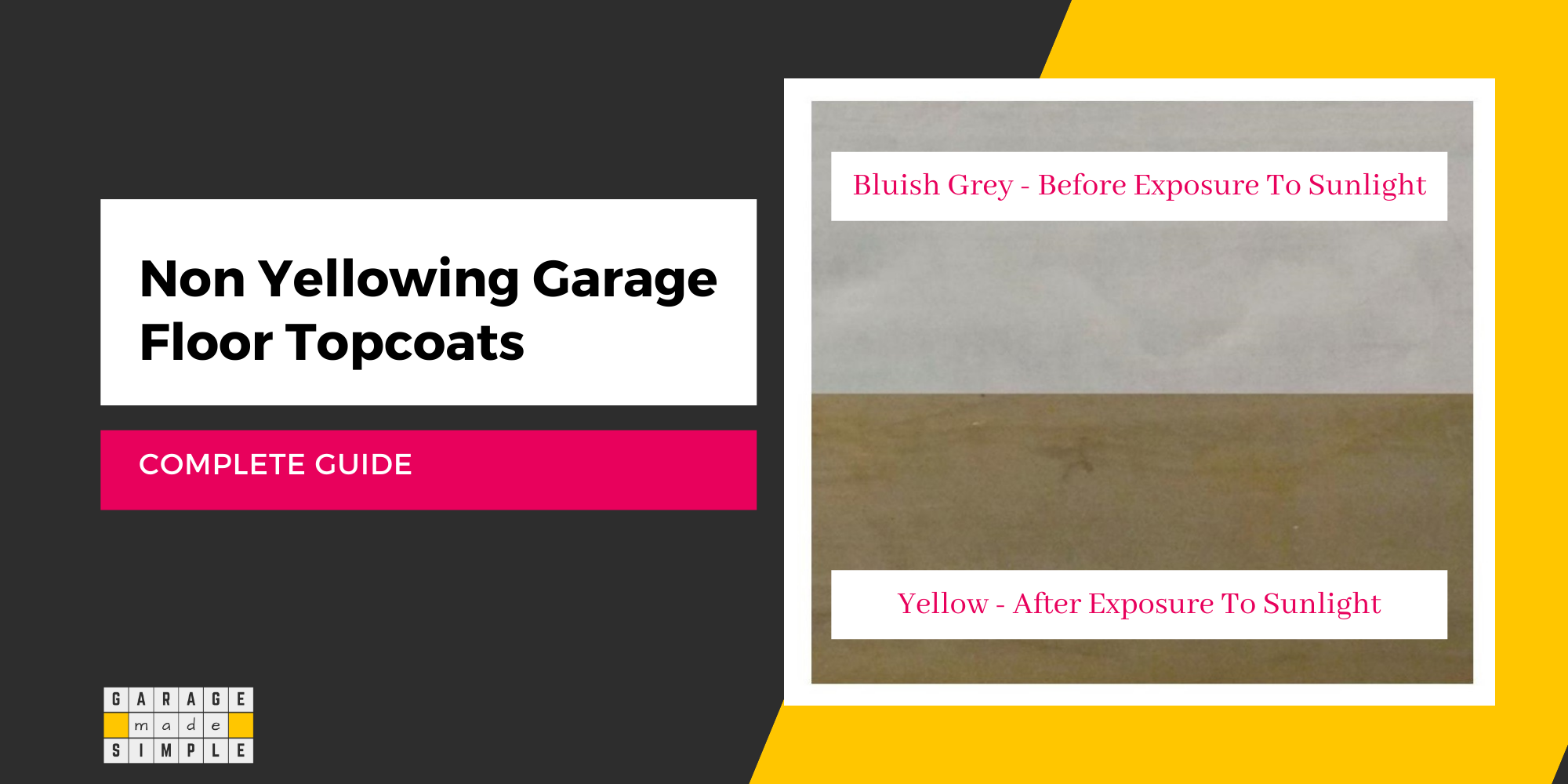Polyaspartic Floor vs Epoxy Floor: What is Really Better?
garagemadesimple.com is a participant in the Amazon Services LLC Associates Program, an affiliate advertising program designed to provide a means for sites to earn advertising fees by advertising and linking to Amazon.com . The website is also an affiliate of a few other brands.
Polyaspartic Floor is the new kid on the block when it comes to Concrete Garage Floorings. Of late there has been a buzz around Polyaspartic Garage Floors. You may have even heard claims that a Polyaspartic Floor is better than an Epoxy Floor. When it comes to Polyaspartic Floor vs Epoxy Floor, what is really Better?
Is a Polyaspartic Garage Floor really better than an Epoxy Garage Floor?
Polyaspartic is a resin in the sub-group of Polyurea resin, which itself is a type of Polyurethane chemistry. Epoxy on the other hand is a different chemistry.
They have some similarities in performance characteristics but also exhibit some significant differences.
Polyaspartic Garage Floor vs Epoxy Garage Floor
Polyurethanes, especially Polyurea & Polyaspartic are better than Epoxies on flexibility & UV resistance, but Epoxies are better on hardness & durability. So it is all about the context and the performance requirement from the coating in that context.
A Polyaspartic Floor is a good option for a garage. But taking all the functional requirements from a garage floor coating perspective, it is not better than an Epoxy Floor. However, it can complement an Epoxy Floor coating by being a top coat.
You can get more information on the role of Clear Top Coat on an Epoxy Floor from my blog post 8 Reasons Why Clear Top Coat On Epoxy Floor Is Better.
In this post I will compare the performance functionalities of a Polyaspartic Floor vs an Epoxy Floor in the context of their suitability as a concrete garage flooring system.
Read on to understand all that you need to know!
Understanding The Chemistry of Resins
Understanding the chemistry of resins is the key to understanding the performance of different coatings, especially garage floor coatings. Resin is the binder, the backbone of every coating. The performance of the coating is largely dependent on the resin used in the coating.
Please feel free to scroll down to the next sections, if you do not like hardcore chemistry too much.
In the material science world, polymer is a term that comes up very often.
“The simplest definition of a polymer is a useful chemical made of many repeating units”
Source: American Chemistry Council
The repeating unit is a combination of elements, usually carbon and hydrogen but often others like oxygen, silicon, chlorine etc.
The repeating unit in an epoxy is an epoxy ring (oxirane) made up of 1 oxygen & 2 carbon atoms.
“The polyurethane (PU) chemistry is a bit more complex. PU is formed by reactions between the two monomers, an isocyanate & a polyol. A broad spectrum of PU resins are possible as there is a wide range of isocyanates & polyols.”
Source: American Chemistry Council
What is Polyaspartic Floor Coating?
Polyaspartic is a subset of Polyurea and Polyurea is a subset of Polyurethanes. It is just that Polyaspartic uses an aliphatic isocyanate whereas Polyurea uses an aromatic isocyanate.
Polyaspartic coatings are based on the reaction of a polyisocyanate with a polyaspartic ester which is an aliphatic diamine. Polyaspartic polyurea is a new generation aliphatic polyurea floor coating system which allows two-component, UV resistant and colorfastness to be desired.
TURKCHEM
Thermosetting resins cross-link together during the curing process to form chemical bonds that can not be reversed. Thermosetting resins cure, that is, set into a hard substance, that remains hard.
Thermosetting resins, once cured, can not be uncured. Thermoplastic resins, on the other hand, can be set and reset indefinitely, making them recyclable.
Both Polyurethane and Epoxy resins are thermosetting resins.
Polyaspartic coatings tend to have a clear, glossy finish. They are therefore preferred as a topcoat. Of course the coating can be pigmented to give solid colors. Decorative flakes can be sprinkled on the surface, while still wet, to create a custom designed look and a non-slip garage floor.
Pros & Cons of Polyaspartic Garage Flooring
The pros & cons of polyaspartic garage flooring are as under:
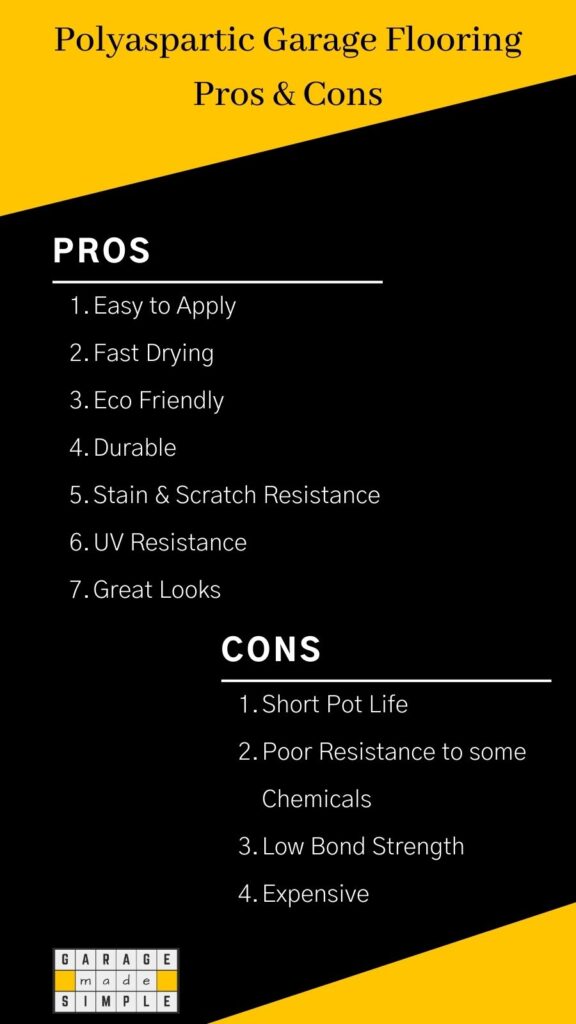
Pros of Polyaspartic Garage Flooring
- Easy to Apply: Polyaspartic application is quite forgiving. It can be applied in most climatic conditions.
- Fast Drying: Polyaspartic cures in 30-60 minutes. You can finish and move into your garage much earlier.
- Eco Friendly: Being water based with low VOCs makes polyaspartic flooring application good for your health and the environment.
- Durable: Polyaspartic coating is pretty hard but, being from the polyurethane family, it does possess some amount of flexibility.
- Stain & Scratch Resistance: Polyaspartic coating has a high degree of stain & scratch resistance due to the coating flexibility.
- UV Resistance: Exposure to UV radiation from the sun will not cause the floor color to fade or yellow.
- Great Looks: Polyaspartic flooring has high gloss and is blemish free. You can choose from clear topcoats, pastel or deep solid colors or floor finishes with decorative flakes.
Cons of Polyaspartic Garage Flooring
- Short Pot Life: Polyaspartic is fast drying. On the flip side this increases the chance of it drying in the can before you can finish the job. A fast drying coating can also trap air bubbles and result in surface imperfections.
- Poor Resistance to Some Chemicals: Polyaspartic does not have a very good resistance to some chemicals, including battery acids.
- Low Bond Strength: Polyaspartic does not form a very strong bond with concrete floors with high moisture content. It could delaminate and peel.
- Expensive: Polyaspartic flooring does not come cheap, so keep that in mind while budgeting your garage makeover.
What is Epoxy Coating?
Epoxy resin is the backbone of any epoxy coating. Epoxy resin has been around for almost a century. Epoxy coatings are widely used to protect metal and concrete surfaces.
Epoxy coatings have very poor UV resistance and this can limit their application in exterior settings. This problem is usually solved by applying an UV resistant top coat, such as polyurethane.
Epoxy makes for an excellent garage floor coating as the application is indoors. Epoxy garage floor coatings are hard, durable, chemical resistant and relatively non-slip.
The application of an epoxy floor coating involves the mixing of 2 components. The first component (base) has the epoxy resin. The second component (hardener) is a polyfunctional curative. The two react to form a thermosetting polymer with cross-linking chains.
Pros and Cons of Epoxy Garage Flooring
The pros & cons of epoxy garage flooring are as under:
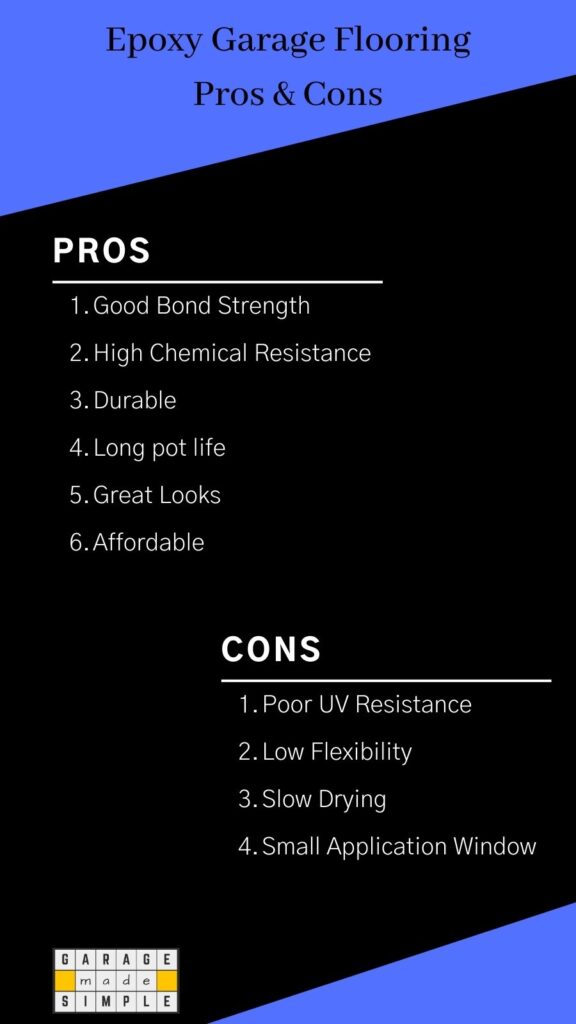
Pros of Epoxy Garage Flooring
- Good Bond Strength: Epoxy coatings form a very strong bond with concrete floors. Epoxy penetrates deeper into the substrate. The slow drying nature of the coating helps in the penetration. The result is an epoxy garage floor coating is less likely to lift up and peel away.
- High Chemical Resistance: Epoxy is resistant to most household & automotive chemicals. Being resistant to battery acid and oil spills makes epoxy a great choice as a garage floor coating.
- Durable: Epoxy coating, once fully cured, forms a hard, durable film that is abrasion & scratch resistant. It can easily handle the foot & vehicular traffic in the garage.
- Long pot life: Epoxy coatings are relatively slower drying and will remain liquid for longer in the pot. This gives you enough time to apply the coating without a rush.
- Great Looks: Epoxy coatings come in a range of colors. Grays & earth tones are quite popular as garage floors. They are simple yet classic. You also have a choice of gloss or semi-gloss finish. You can also create a unique look by sprinkling decorative color flakes on the still wet epoxy. It is also quite easy to pressure wash an epoxy floor to maintain its looks.
- Affordable: The popularity and availability of epoxy coatings makes it more affordable than most other garage floor coatings.
Cons of Epoxy Garage Flooring
- Poor UV Resistance: Epoxy is not recommended in areas that have high exposure to sunlight. Epoxy coatings will fade and yellow on prolonged exposure.
- Low Flexibility: Epoxy coatings are extremely hard but they are brittle too. Epoxy floors may not scratch easily but they can crack easily. An epoxy coating is more likely to mirror the cracks in the concrete floor, than other coatings.
- Slow Drying: Epoxy may be frustrating to work with, if you want to move back into your garage fast. Installation will take the entire weekend. Full curing will take a week.
- Small Application Window: Epoxy application is not particularly difficult. Finding the right climatic condition for the application may be challenging though. Too hot or too cold and you will find it difficult to apply epoxy. The temperature has to be in the right range.
Performance Comparison: Polyaspartic Floor vs Epoxy Floor
As we have seen, both polyaspartic and epoxy coatings have their pros & cons. It is now time to compare the two on key performance parameters that are relevant to their suitability as garage floor coatings.
Hardness
Hardness is a measure of how well a material (or a coating in this case) responds to a constant load over time. Will the legs of your workbench leave an indentation on your garage floor coating?
Epoxy coatings are harder than Polyaspartic coatings.
Flexibility
Flexibility is the ability of a coating to deform under stress but regain its shape once the stress or load is removed. The opposite of flexibility is brittleness.
More often than not a coating can be tough & flexible or hard & brittle. An easy to understand example, from the non coating world is rubber and glass. A rubber mat is tough & flexible while a glass sheet is hard & brittle.
Polyaspartic coatings are more flexible than Epoxy coatings.
Crack Resistance
Garage floor coatings are applied on concrete slab on grade. Concrete slabs are subjected to tensile stresses due to temperature variations and ground movement. A flexible coating will elongate or contract accordingly. A brittle coating may fail and crack.
Polyaspartic coatings are less likely to mirror the cracks in the concrete than Epoxy coatings.
Scratch Resistance
Floor coatings get scratched when a sharp, hard object is rubbed against it. When it comes to garage floors, sand or gravel caught between the car tires is the most likely culprit.
A flexible coating is able to resist scratches better than a hard, non resilient coating.
Polyaspartic coatings are more scratch resistant than Epoxy coatings.
Abrasion Resistance
Abrasion occurs when a rougher substance rubs against the coating and takes away a bit of the top layer. By the way, this is how a grinding wheel works.
Polyaspartic coatings are much more abrasion resistant than epoxy coatings. This is because they have more flexibility than epoxy and are able to absorb impact better.
In fact, some manufacturer’s claim that the wear resistance of polyurethane over epoxy is almost 3 to 1.
Polyaspartic coatings are more abrasion resistant than Epoxy coatings.
Adhesion
Good adhesion or bond strength between the floor coating and the concrete substrate is essential to impart strength. While penetrating sealer helps in making the garage concrete floor water resistant, topical sealer results in poor adhesion of any paint or coating.
Epoxy bonds extremely well to properly prepared bare concrete and even old or worn concrete. The bonding is even better if you are using a self leveling (100% solids) Epoxy.
The concrete floor has a profile and epoxy is better able to flow into the valleys and get a strong grip on the concrete. Polyaspartic coatings, on the other hand, do not bond strongly with the concrete floor, partly because they can not develop thicker dry film thicknesses.
Epoxy coatings have stronger adhesion to concrete than Polyaspartic coatings.
Chemical Resistance
Both Epoxy coatings and Polyaspartic coatings are resistant to chemicals. However, they are resistant to different chemicals.
For example, Epoxies are resistant to sulfuric acid (used in car batteries) while Polyaspartic, Polyurea & Polyurethane coatings are resistant to lactic acid (concerns dairy production).
Epoxy coatings have higher resistance to garage chemicals as compared to Polyaspartic coatings.
UV Resistance
Epoxy resin has very poor resistance to UV light. Epoxy paint and coatings will fade & yellow on exposure toUV radiation from sunlight. This is the reason epoxy coatings are never recommended for outdoor applications.
Polyaspartic coatings, on the other hand, have excellent UV resistance. They work wonderfully, even on driveways and uncovered concrete floored parking lots.
Polyaspartic coatings have excellent UV resistance, far superior to Epoxy coatings.
Coating Application: Polyaspartic Floor vs Epoxy Floor
Polyaspartic coatings are more sensitive to moisture in the air, while in the uncured state. Moisture in the air may cause something similar to a pinhole effect.
Epoxy coatings are also somewhat sensitive to moisture in the air but the effect is limited to slight discoloration and blushing.
Polyaspartic coatings can be recoated in a few hours. A Polyaspartic coating cures really fast (often 15-20 mts). That is great for quicker re-coats and final use. But it also makes the application quite tricky.
Epoxy coating on the other hand has a pot life of an hour and a full curing time of 7 days. At the earliest you need to wait 3 days before you can drive your car on an epoxy coated garage floor.
Water Based vs Solvent Based
Another point to keep in mind is that most Polyaspartic coatings are solvent based. However, Epoxy coatings can either be solvent based or water based. Increasingly they are water based due to environmental reasons.
Some applicators or even manufacturers will try to give the impression that a water based coating is inferior to a solvent based coating.
Totally Incorrect!
Solvent or water are just mediums. Both will disappear into the atmosphere once the coating cures fully. They have no role to play in the final cured coating film. The properties of the coating depend mostly on the resin and the thickness of the coating.
If you are applying a floor coating in extremely cold conditions then an epoxy coating will not work. You have to use a Polyaspartic coating.
Bottom Line
The summary of the performance comparison between Polyaspartic Floor vs Epoxy Floor is as under.
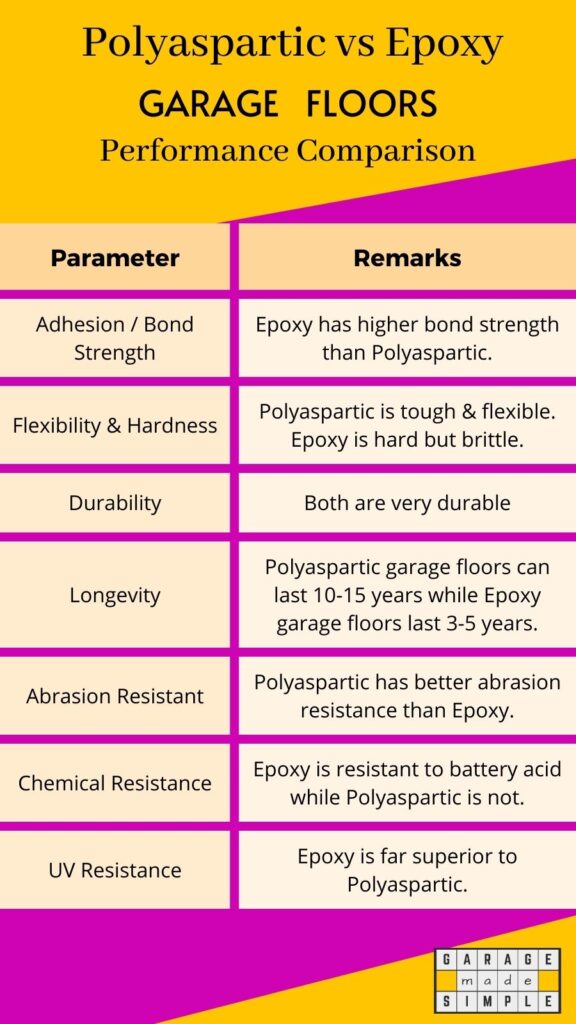
These are the basic differences. Of course every manufacturer has a different formulation and this does affect the functional properties. The application process, ambient conditions and film thickness can make a huge difference in performance too.
It would be fantastic if we were comparing apples to apples, but most often we are not. You have to keep this in mind.
I would suggest that you go for one of the two options, if you want a really sound garage floor coating.
OPTION 1
Use Armorpoxy Flake Polyaspartic Flooring Kit. The Kit comes in 300 sq ft (1 car garage) or 600 sq ft (2 car garage options.
300 SQFT Kit Contents:
- 1 quart prep/etch solution
- 1 tint pack for base coat
- 2 gallons SPGX polyurea
- 3 lb color-coordinated decorative flecks
- 1 pack Armorgrip clear non-skid additive
- 5 gallon mixing bucket with liner, 2 wood mixing sticks, chip brush, rubber gloves, 2x 9″ roller pads & detailed instructions.
OPTION 2
Use ROCKSOLID Polycuramine® Garage Floor Coating, from RUST-OLEUM. It is simply the best. Why? Because it combines the best of Polyurea, Urethane and Epoxy chemistries. The result is ONE indestructible, self-leveling, flexible, fast curing, high gloss coating system.
I have a detailed blog post on this amazing coating for garage floors. Check out RockSolid Polycuramine Is Better Than Epoxy & Best Value for Money.
Thank you very much for reading the post. I do hope you found it informative and useful.

